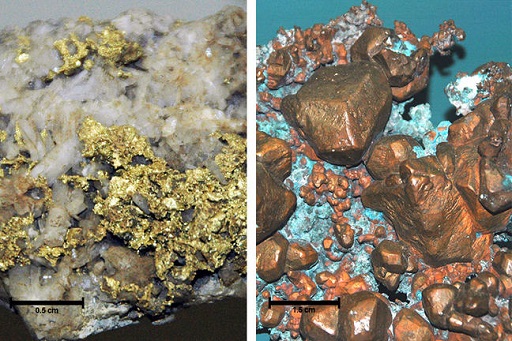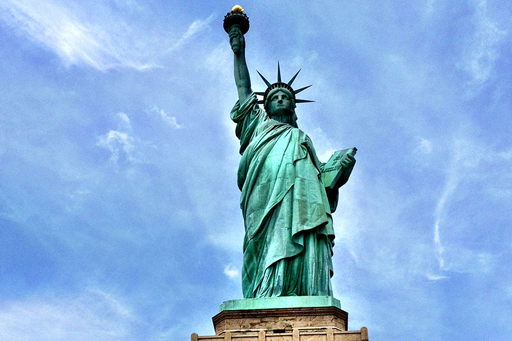2.21 Ancient people and metals
Finding the correct rocks to dig out of the ground does not happen by accident. In this section you will look at how ancient and modern humans have found the metals they need.
Have you ever wondered how geologists find minerals and work out where mines should go? And how did ancient people like those of the Bronze Age find metals?
Copper was the first metal to be worked by humans. In northern Iraq, 8000-year-old copper beads have been found. Then, 6000 years ago, gold was used in burial sites in Bulgaria, and apart from a lead bracelet that is 5500 years old, the only metals humans used for over 4000 years were gold and copper. But why?
The simple answer is that these metals, and a few others, occur in their ‘native forms’ – as a naturally occurring piece of metal, not combined with other elements to form a mineral. These ancient people wouldn’t have had to extract it from the rock themselves. They probably found them as nuggets in rivers, just like people do today if they go panning for gold (if they are lucky!). Later, they would have found layers of the native metals in the rocks (we call these ‘veins’) and mined those.
Once the majority of these nuggets had been exhausted, new sources of these metals had to be found. The main reason copper was used a lot was because its ore minerals (minerals that contain metals) are easy to find because of their amazing colours.
Do you know the colour most typically associated with copper (apart from the coppery orange–brown colour of the native metal)? It’s a blue–green colour. You may have seen it on buildings or statues and not actually known it was copper. The copper oxidises when exposed to the ‘wet’ atmosphere, producing a pigmentation commonly known as verdigris. The most famous example of a copper object showing this colour is probably the Statue of Liberty in the USA.
Natural copper minerals also have blue–green colours, such as malachite and chalcopyrite, so these were easy for ancient humans to find.
Can you think of any other buildings or statues near you that are the same colour as the Statue of Liberty?


